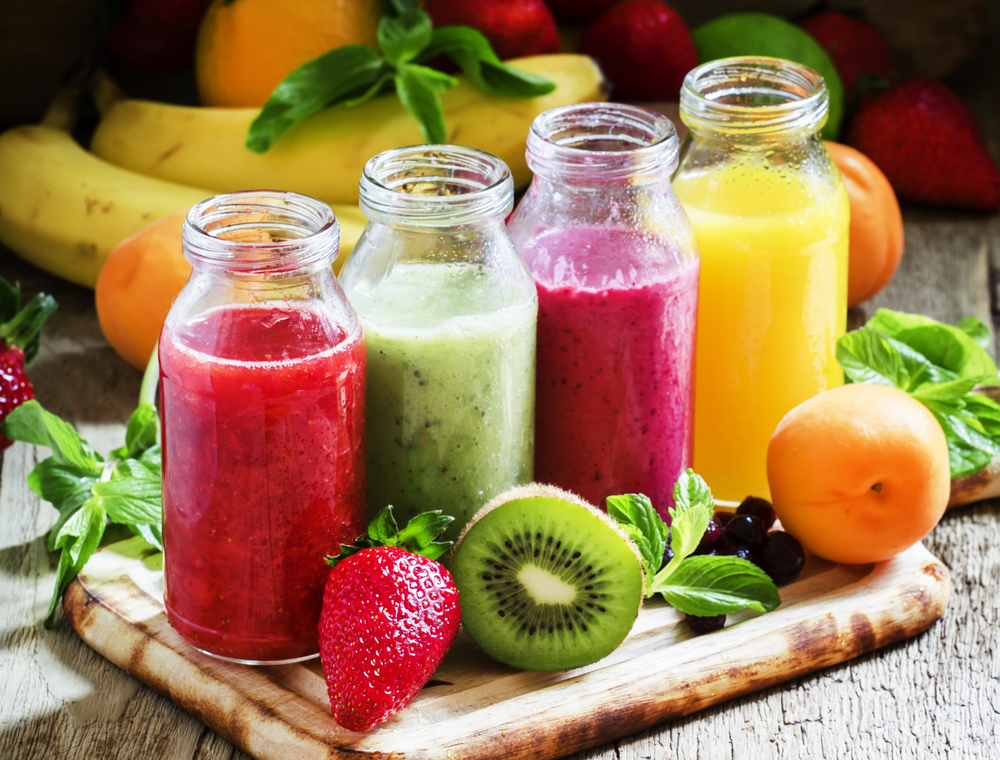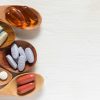The benefits and recommendations of F&V
Fruits and vegetables are rich in vitamins, minerals, dietary fiber, antioxidants, and phytochemicals, while high intake of fruits and vegetables is associated with reduced risk for cancers in the lung, mouth, larynx, pharynx, stomach, and colorectal.
Most dietary guidelines across the globe recommend intake of 2 servings of fruits and 2-3 servings of non-starchy vegetables daily; or fill up half of your 10inch plate (MyHealthyPlate) during each main meal as part of a well-balanced diet.
If you are feeling well
For people who are feeling well, who have no problems chewing, swallowing, and digesting their foods normally, and aren’t faced with problems of unintended weight loss, should obtain their first 5 servings of fruits and vegetables as whole foods (original form, unprocessed).
Whole fruits and vegetables are better than juices in terms of containing higher dietary fiber content, promote feeling of satiety, lower glycemic index, better glucose control, help in weight management, reduce risk of obesity, besides providing satisfaction of chewing and eating.
Juicing, the process of separating juice from the pulp of fruits, vegetables, and plant foods, should not be used to meet basic nutrition needs of normal healthy people, because it significantly reduces the amount of dietary fiber, besides having a higher glycemic index (rapidly raise blood glucose).
However, juicing can still be a great way to add more servings of vegetables in addition to an already-healthy diet.
If you are on CA treatment
On the other hand, if you are on active CA treatment, and are faced with eating problems such as loss of appetite, chewing, swallowing, or digestive problems, or are struggling to achieve adequate oral intake, or even struggling to maintain your weight due to cancer and its treatment, then juicing would be a good nutritional strategy for you to obtain valuable nutrients in an easy-to-drink nourishing liquid.
At this stage, you may also want to consider boosting your nutritional intake by adding High-bioavailability (HBV) Protein such as milk, yogurt, soya milk, silken tofu and healthy unsaturated fats from avocados and nuts into your blenderized fruit and vegetable beverages, making them nutrient-dense “healthy smoothies”.
Risks of sugary drinks
Many of the commercially packed fruit juices tend to have misleading product names such as “100% pure fresh fruit juices” “No added sugars”, but with a careful reading of the Nutrition Facts Label / Nutrition Information Panel, these processed juices are generally very low in dietary fiber, but concentrated in refined sugars (~20-30g @ 4-6 teaspoon sugar/serving).
Plenty of studies have attempted to explore the health risks of high intake of refined sugars (glucose, sucrose, fructose), and was strongly established to increase risks of obesity, diabetes, and cardiovascular diseases.
In terms of cancer prevention, a diet with high glycemic load was associated with higher risks of endometrial (womb) cancer. Since high intake of refined sugars is also associated with overweight/obesity, this may indirectly increase risks for many cancers related to obesity such as colorectal, breast, gallbladder, kidney, lover, oesophagus, ovary, pancreas, prostate, stomach and womb (endometrium).
A France NutriNet-Sante study recently published in the British Medical Journal, which had conducted a prospective study on 101,257 French adults, and were followed for about 9 years, had concluded that daily intake of 100ml sugary drink, which is about 1/3 of a can of soda, increased overall cancer risk by 18% and breast cancer risk by 22%. There was no apparent link between cancer risk and artificially sweetened beverages.
In this large prospective study, the researchers also concluded that the consumption of 100% fruit juice was significantly associated with the risk of overall cancer. Although the results require replication in larger scale prospective studies, they suggest that sugary drinks might represent a modifiable risk factor for cancer prevention.
If possible, try to avoid commercially packed fruit juices, which are low in dietary fiber and high in refined sugars.
If you need to make home-made juices
Here are some tips:
- Use the blender, keep the dietary fiber portion of your F&V.
- Do not add refined sugar (white sugar, brown sugar, honey etc) into your juice, as it already contains naturally occurring sugars (fructose).
- Limit amount of fruits to 1 serving per glass of juice.
- Add bulk or volume by incorporating:
– Zero-low sugar vegetables: Cucumber, tomato, celery, kale, spinach, beetroot, ginger, leafy greens.
– Cruciferous vegetables for cancer prevention: Broccoli, cauliflower, cabbage, kale, garden cress, bok choy, Brussels sprouts etc
– Low-sugar fruits: Avocado, lemon, lime - Eat a rainbow. Reduce repetition. Embrace variety of brightly-colored F&V in order to obtain full spectrum of nutrients, antioxidants, phytochemicals. This offers the strongest cancer protection .
- May add chia seed to increase fiber content & promote satiety for those who intend to manage weight and control blood glucose.
Take Home Message:
- Take your first 5 servings of Fruits & Vegetables as whole foods
- Blend F&V with Protein & Healthy Fats if you are on active cancer treatment and/or have eating problems.
- Avoid commercially packed sugary fruit juices
- If you don’t need but want to juice: don’t add sugar, keep fiber, limit fruits, add vegetables, embrace variety.






